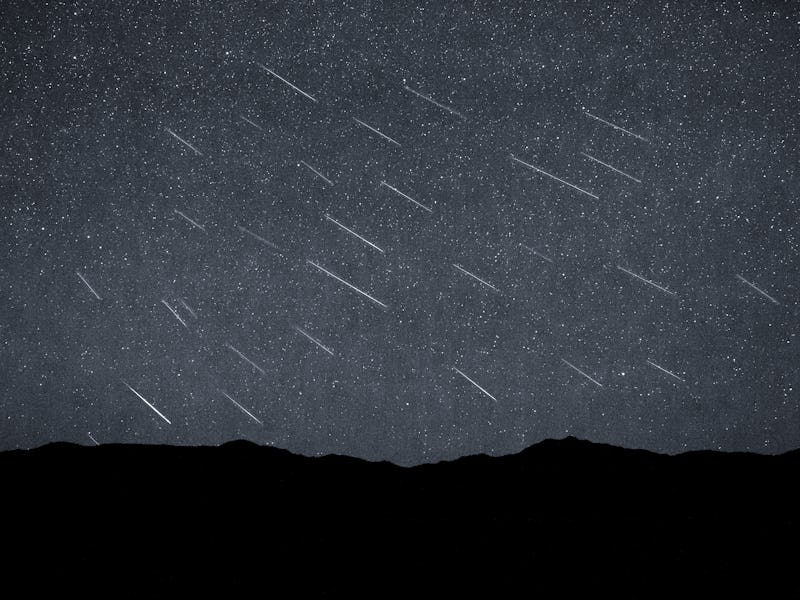Eta Aquariids Meteor Shower Might Not Be the Brightest Thing in Next Week's Sky

The Lyrid meteor shower graced the April sky with its streaking fireballs. If you missed this celestial downpour, don’t sweat it: The second week of May will be chock-full of heavenly eye-candy for stargazers to enjoy, including the Eta Aquariids meteor shower.
The celestial event will take place in the wee hours of May 7. Unlike last month’s meteor shower, however, the Aquariids will be accompanied by two other astronomical happenings. So break out those telescopes, enjoy the warm weather, and feast your eyes on this astral trifecta.
May 6-7: Eta Aquariids
The Aquariids occur once every year and run from April 19 to May 28, but they’re at their peak the night of May 6 to the morning of May 7. People residing in the Southern Hemisphere will see the most activity with up to 60 meteors whizzing across the night sky, while the opposite half of the world will only be able to see around 30 per hour depending on cloud conditions and light pollution.
These meteors will be radiating from the Aquarius constellation, but the actual source of the Aquariids is Halley’s Comet. This icy object is on a 75-year orbit of the sun and the next time it’s expected to be visible from Earth is 2061. So the meteors that will be visible from Earth this weekend separated from Halley’s Comet up to hundreds of years ago.
May 7: Waning Gibbous Moon
The moon will also look extra dramatic the same night as the Aquariids. Following the recent full moon on April 30, our natural satellite will enter its Waning Gibbous phase. During this intermediate lunar stage, a quarter of the moon will be hidden by a shadow. This shade highlights all of the craters on one side of the moon, making for a pretty spectacular photo if you have a telescope.
While it might look beautiful, the light from the Waning Gibbous moon might obscure some of the fainter meteors from the Aquariids, so make sure you’re watching from a dark location.
May 8: Jupiter at Opposition
The largest planet in the solar system will be the biggest and brightest it will be in the night sky for this year. Jupiter will be at its closest approach to Earth and its face will be fully illuminated by the sun.
This will be the best time to view and photograph the gas giant for the remainder of 2018. You actually won’t even need a telescope to catch a good glimpse of the planet and its four largest moons, all you’ll need to do is grab a pair of binoculars and look towards the Libra constellation.
So don’t forget to look up next week. The sky will be fully lit.